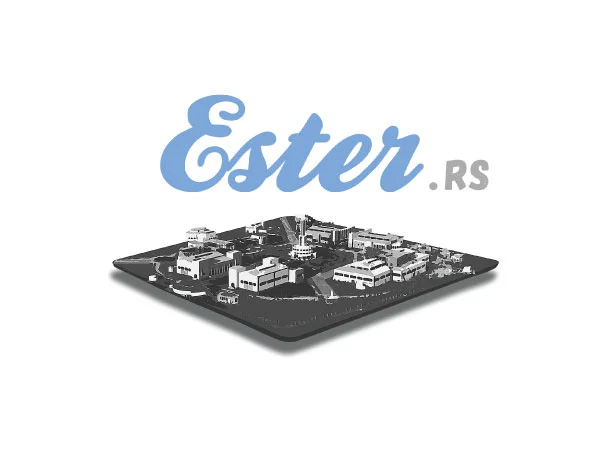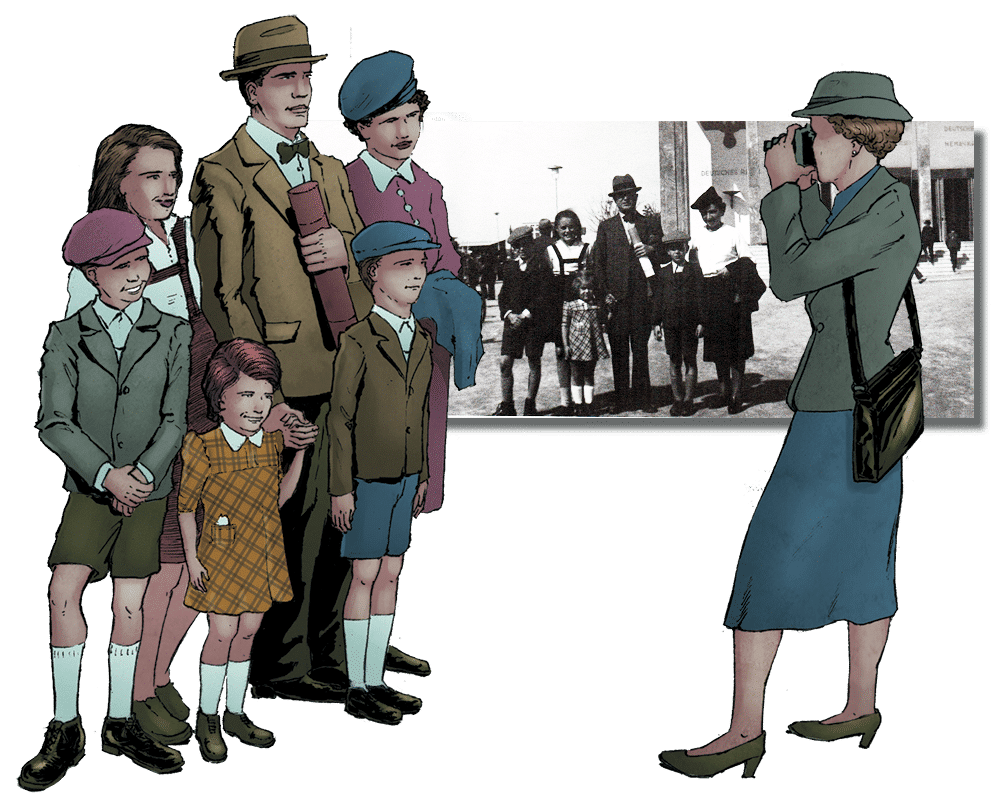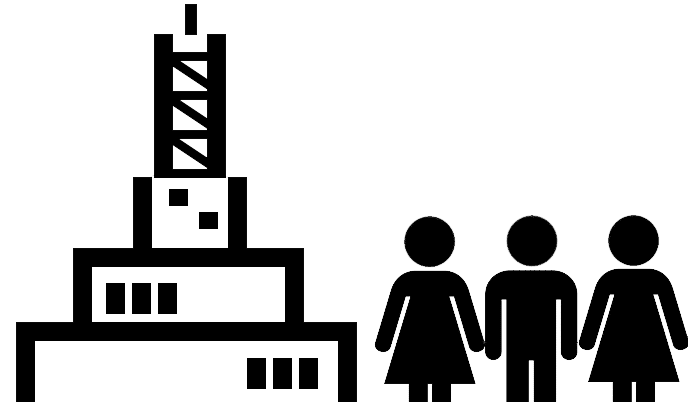What is Ester?
Ester is a collection of novels and a teaching material, its most important feature being a series of dramatized and illustrated stories about the Jewish victims killed in the Sajmište Concentration Camp (Judenlager Semlin) near Belgrade in the beginning of 1942. The stories focus on young victims and their families, their pre-war lives, and their lives under the German occupation and during the Holocaust. The stories are based on true historical events and the people who experienced them.
In the course of creating this program, experts from Serbia, Germany, the Netherlands and other countries were consulted, while a team consisting of expert historians, teachers, specialists on Jewish culture and tradition, Holocaust survivors, as well as a group of illustrators from Serbia and the Netherlands who were working together on its implementation.




Dramatization of History
The events depicted in the Ester novels are true, documented events corroborated by relevant historical sources, testimonies of survivors, witnesses, and other documentation. While creating the novels, one of the important goals was to find the correct balance between a certain degree of necessary liberty between the dramatization and the historical facts.
Ester graphic novels were created as a reconstruction and dramatization of history based on available fragments of personal stories, keeping in mind a certain target and age group. Taking this approach, while keeping historical events and facts as central in the stories, we placed the main focus on the human aspects, feelings, and thoughts of the main characters, with the aim of engaging students on a different level by creating a purposeful tool for teaching and learning about the Holocaust.
Particular segments of the stories were created specifically to better present the Jewish culture and traditions and the pre-war Jewish life in Serbia.
In some cases we used experiences of several different individuals and families by blending them into one single story. For instance, it might have been another father who, just a few days before he was shot, gave his cap to his son during his son’s last visit to the Topovske Šupe Concentration Camp. But it is a matter of historical fact that there really was a father who did it.
In order to present specific aspects or subjects, such as collaboration, resistance, helpers, refugees, looting of Jewish property, etc., some otherwise historically accurate details are implanted into the stories, usually by placing some of the main characters at a particular location and time. For instance, in one of the novels, one of the main characters is present during the Volksdeutsche march through central Belgrade in September 1941. We cannot know if this boy was there that day, but – he might have been. On the other hand, the event itself is a well-documented historical fact, and it was important to present it to the students. Having in mind the educational purpose of the novels, we believe that such adaptations were justified.
It is important to emphasize that all interventions and dramatizations were made in accordance with historical sources and under the supervision of expert historians in order not to jeopardize the crucial and important historical facts.
Grafičke novele Ester su bazirane na onoliko istorijskih detalja i podataka o glavnim likovima priča koliko smo mogli da pronađemo i utvrdimo, i ne predstavljaju pokušaj da ispričaju njihove lične priče, nego su zbirka različitih iskustava i sudbina sakupljenih u format koji treba da posluži svrsi učenja o Holokaustu.
Na ovaj način pokušali smo da ponudimo materijal koji će učenike inspirisati na jedan drugi, emotivno angažovaniji način, otvarajući mogućnost za kreativni i istraživački rad. Na izvestan način, inspiraciju nam je pružio čitav niz dela različitih umetničkih formi koji ovu temu obrađuju.
Između ostalih, David Albahari ovako opisuje svoj roman Gec i Majer:
“Roman Gec i Majer je zasnovan na istorijskim činjenicama iz brojnih izvora ali je ipak priča koja poštuje činjenice u onoj meri u kojoj to njoj odgovara, jer opisujući stradanje jedne porodice u Srbiji, opisao sam na simboličan način sudbinu cele jevrejske zajednice”.
International team of experts
Ester was produced by an international team consisting of expert historians, teachers, experts for the Jewish culture and tradition, Holocaust survivors, as well as a group of illustrators from Serbia and the Netherlands were working together on its materialization.
Raznovrsne mogućnosti za učenje i istraživanje
Priče i ilustracije su mnogoslojne, kreirane sa mnoštvom detalja koji mogu da posluže kao polazna tačka za dalji istraživački rad, ne samo o istorijskim događajima nego i o drugim detaljima života pre Drugog svetskog rata kakvi su tehnologija, kultura, film, sport, moda, i drugi elementi svakodnevnice. Osim što pratimo glavne junake i njihove sudbine, u pričama se pojavljuju i mnoge druge ličnosti kao što su Hilda Dajč, jevrejske izbeglice iz Austrije, članovi prvog srpskog džez orkestra ”Miki džez” (Micky Jazz), Julije Bauer – jugoslovenski atletičar i olimpijac, i mnogi drugi, o čijim životima se mogu raditi posebni istraživački zadaci.
Na svakoj stranici prikazana je po jedna ilustracija, odnosno scena priče. Uz svaku scenu precizno su obeleženi tačan datum i lokacije na mapi. Na svakoj stranici su priložene istorijske fotografije i dokumenti, kao i zadaci za istraživački rad. Tamo gde je za to bilo potrebe dadata su i objašnjenja manje poznatih reči.
Metodologija
Učenici mogu da analiziraju ilustracije i tekstove, istražujući sami ili u grupi, koristeći arhive istorijskih novina, fotografije i druge istorijske materijale. Drugi važan metod rada je poređenje ilustracija koje predstavljaju iste lokacije (često i iste ličnosti) ali u različitim vremenskim periodima, kao na primer pre i posle okupacije. Osim toga, materijal otvara niz mogućnosti za rad na istorijskim lokacijama. Kao dodatni detalj, materijali imaju za cilj da učenicima predstave profesije istoričara i arhivista, i osnove istorijskog naučno-istraživačkog rada uopšte. Više o pedagoškom pristupu možete pročitati na stranici Metodologija.
Istorijski pregled
Uvodni tekst nudi kratak osvrt na Holokaust uopšte, i pitanju zašto se sećamo i učimo o Holokaustu. U sledećem odeljku je predstavljena istorija Beogradskog sajma, okupacije Srbije, i logora na Sajmištu. Materijal je obogaćen originalnim mapama i grafičkim prkazima (infographics). Takođe, kako je već pomenuto da materijal ima za cilj i da promoviše profesije istoričara i arhivista, jedan deo teksta je posvećen istraživnju, istorijskoj građi i radu istoričara i arhivista.
Paralelna hronologija
Na stranici Hronologija nudimo dva paralelna istorijska pregleda, jedan posvećen nacionalsocijalizmu i antisemitizmu u nacističkoj Nemačkoj i Holokaustu u Evropi, i drugi koji fokusira na okupaciju, stradanje, otpor i Holokaust u Srbiji. Na taj način ponuđeno je uporedno praćenje istorijskih dešavanja u Srbiji i Evropi, što omogućava bolje razumevanje priča predstavljenim u grafičkim novelama, i stavlja dešavanja u Srbiji u širi istorijski kontekst rata i Holokausta u Evropi.
Nadamo se da će zbirka Ester doprineti sećanju i učenju o Holokaustu, i pružiti dodatnu motivaciju za negovanje humanističke i antifašističke tradicije u Srbiji.
Teaching material
Illustrated stories
Graphic novels
True stories - Real people
Based on historical documentation
Learning through research
Learning on locations
Many possibilities for creative work
A short overview

Graphic novels about the Holocaust
based on real people and true events
The Dramatized stories about the suffering of the Jews in Serbia are based on real historical characters, true historical events, testimonies, historical documentation and material. An international team of experts worked together on creating the stories in order to preserve historical accuracy, the illustrations being a creation of an international team of artists.

Time, date and Location on a Map
marked with a precision added to every scene and illustration
Time, date and location, precisely marked on a map are added to every scene, which allows following the plot on the enclosed maps, too. A parallel timelines of historical events both in Europe and in Serbia are also available, which gives an opportunity of following events in Germany and Europe where the war broke out and in Serbia, respectively. It helps us to understand better the historical context of the stories, as well as to follow the events that are happening simultaneously at the other locations.

Historical Documentation
photographs, historical newspapers, documents
Among additional materials there are historical photographs, as well as the other documentation and archival material, which reconstructed scenes and events presented in a story are based on. Students’ tasks suggest use of the historical newspapers available in a digital form on the websites of the National Library of Serbia and the University Library “Svetozar Marković“in Belgrade.

Investigating tasks
from the Jewish culture to the topics related to sport and fashion
A range of investigating tasks is prepared for students to work on individually, or in a group. Tasks open various possibilities of approaching the subject matter by analysing various topics referring to the historical period and the events which are presented in the stories: ranging from the topics referring to analysing the Jewish culture and tradition, historical characters and events to the topics referring to art, sport, technology, fashion, music, culture, comics etc.

Various Formats
projection on a big screen, online use, iPad/tablet format, PDF or printed
The teaching material is prepared in such way as to be projected in a form of digital presentation in the classroom or be used directly on a computer, or saved in a PDF format suitable for reading on a tablet or for printing.

Learning at the Historical Locations
Investigating photo reports and interviews with the passers-by
The material offers a whole range of possibilities of working and teaching at the historical sites, including ex cathedra approach, individual work or in a group.
